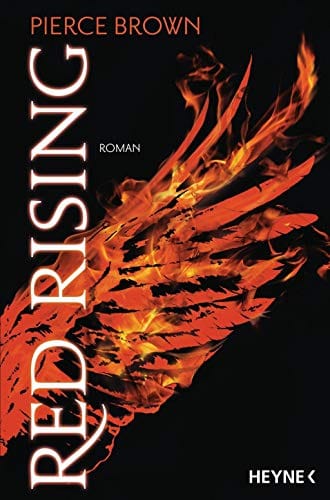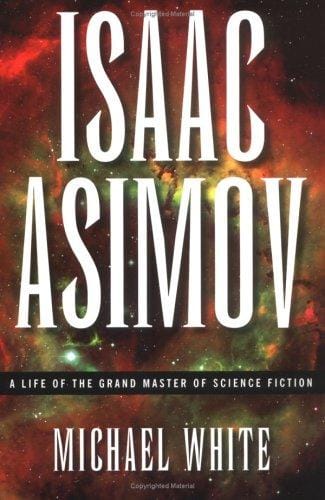Red Rising: A Deep Dive Into Pierce Brown’s Dystopian Epic
Discover the world of Red Rising, its plot, themes, and why Pierce Brown's sci-fi epic belongs on your shelf.

Introduction to the Red Rising Phenomenon
Since its release in 2014, Pierce Brown’s Red Rising has rocketed from debut novel to modern science-fiction classic. Set in a brutal, color-coded caste system on a terraformed Mars, the story follows Darrow, a lowly Red miner who infiltrates the ruling Gold elite to ignite a revolution. The blend of dystopian politics, Roman-inspired warfare, and breakneck pacing has earned the series millions of fans and multiple awards. Whether you are a new reader or a seasoned Howler, this guide will unpack the plot, themes, and cultural impact of Brown’s high-octane saga.
Plot Overview Without Major Spoilers
The first novel introduces Darrow as a "Helldiver," a Red who believes his people are sacrificing their lives to make Mars habitable for future generations. After a personal tragedy exposes the oppressive lie behind that mission, Darrow is recruited by a rebel group known as the Sons of Ares. Through dangerous genetic carving, he is transformed into a Gold and thrust into the Institute—an elite war college where Gold youths battle for power and prestige. The Institute’s savage war games test Darrow’s cunning as he balances survival with his secret goal of dismantling the hierarchy from within.
Subsequent books—Golden Son, Morning Star, Iron Gold, and Dark Age—expand the universe to include the moons of Jupiter, the ruins of Earth, and the depths of the asteroid belt. Alliances shift, empires crumble, and characters you love (or hate) evolve in unexpected directions. Brown weaves cliffhangers and emotional gut punches that keep pages turning and forums buzzing.
Key Themes That Resonate
Class and Social Mobility
At its core, Red Rising dissects systemic inequality. The Color system—Gold, Silver, Obsidian, Violet, Blue, Green, Yellow, Orange, Gray, and Red—represents rigid social strata. Darrow’s journey from Red to Gold asks whether individual heroism can topple entrenched power or if revolutions simply reshape oppression.
Identity and Transformation
Darrow’s physical and psychological metamorphosis raises questions about authenticity. When does a disguise become reality? Brown’s depiction of body modification and cultural assimilation makes this theme especially poignant for contemporary readers grappling with social media personas and code-switching.
Loyalty and Betrayal
Friendships forged in battle underpin the narrative, yet betrayals abound. Brown crafts morally gray characters like Mustang, Sevro, Cassius, and the Jackal, each wrestling with ambition, duty, and ideology. These relationships add emotional depth that transcends traditional hero-versus-villain tropes.
World-Building: A Blend of Myth and Futurism
Brown fuses Roman mythology with cutting-edge technology. Golds style themselves after Roman legions, wielding gravBoots, pulseFists, and starships that ply the solar system. Obsidians channel Norse lore, flying into battle on armored griffins. This mash-up feels both fresh and familiar, creating a universe as immersive as those of Frank Herbert’s Dune or Suzanne Collins’s The Hunger Games.
Language reinforces the hierarchy: Golds speak in archaic diction reminiscent of Shakespeare, while Reds use clipped, industrial slang. The resulting texture makes the Color system immediately recognizable and easy to visualize.
Reading Order and Entry Points
The original trilogy (Red Rising, Golden Son, Morning Star) offers a complete arc, but Brown expanded the series into a second trilogy that begins with Iron Gold. Newcomers should start with the first book to understand character motivations. Audiobook fans will appreciate Tim Gerard Reynolds’s acclaimed narration, which captures accents and tension flawlessly.
For graphic novel enthusiasts, Dynamite Entertainment’s comic adaptation reimagines key scenes with dynamic artwork, making it an accessible gateway for reluctant readers.
Why Red Rising Stands Out in Modern Sci-Fi
1. Relentless Pacing: Brown rarely allows readers to catch breath between plot twists. Each chapter ends with a hook, encouraging “just one more page” syndrome.
2. Complex Characters: Even side characters receive arcs and motivations, reflecting the messy reality of rebellion.
3. Sociopolitical Relevance: Issues of inequality, propaganda, and radicalization mirror current global debates, giving the series narrative heft beyond escapism.
4. Cinematic Storytelling: From zero-gravity dogfights to grand gladiatorial contests, the books read like a summer blockbuster begging for the silver screen.
Adaptation News: Screen and Beyond
A film adaptation was optioned soon after publication, later evolving into a planned television series helmed by Pierce Brown himself. While production updates ebb and flow, Brown confirmed multiple pilot drafts and a commitment to staying true to the saga’s grit. Fans speculate that a long-form streaming series—think Game of Thrones in space—would best capture the sprawling narrative and ensemble cast.
Tips for First-Time Readers
• Keep a Color hierarchy cheat sheet handy during the opening chapters.
• Expect a tonal shift after the Institute arc; the battlefield widens, politics thicken, and stakes escalate exponentially.
• If you find the early chapters bleak, push through to the Institute—most readers cite that section as the turning point from interest to obsession.
Community and Fandom
The “Howlers”—named after Sevro’s ragtag pack—form one of the internet’s most passionate fandoms. Subreddits, Discord servers, and cosplay groups discuss theories about the mysterious Ash Lord, analyze Brown’s meticulously crafted slang, and share fan art. Annual re-read events build anticipation for the forthcoming seventh installment, tentatively titled Light Bringer.
Conclusion: Should You Read Red Rising?
If you crave a story that marries the brutal politics of Game of Thrones, the class commentary of The Hunger Games, and the space-opera scope of Dune, then Red Rising is your next obsession. Pierce Brown balances literary ambition with page-turning momentum, resulting in a series that is both thought-provoking and wildly entertaining. Strap in, sharpen your slingBlade, and remember: "Break the chains, live for more."



